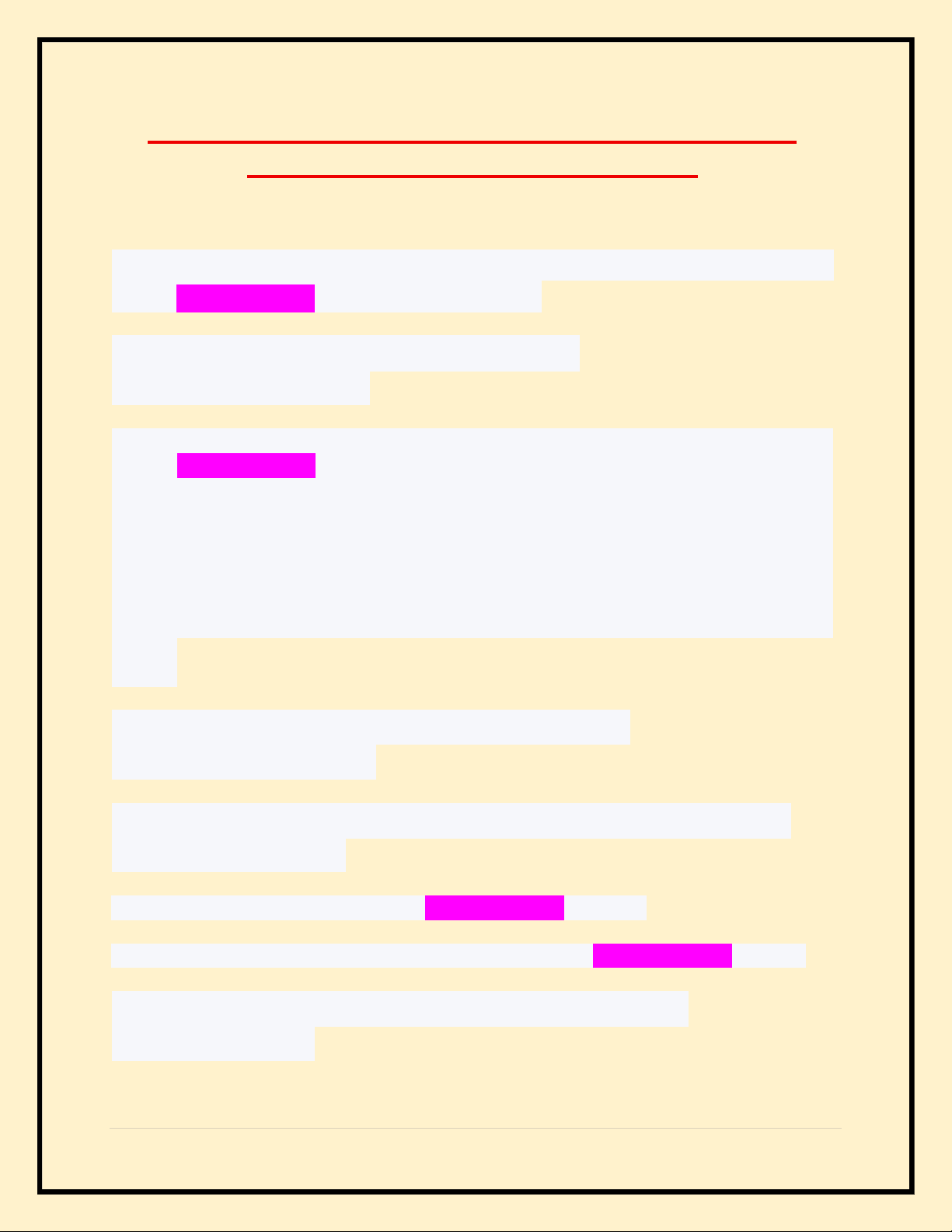
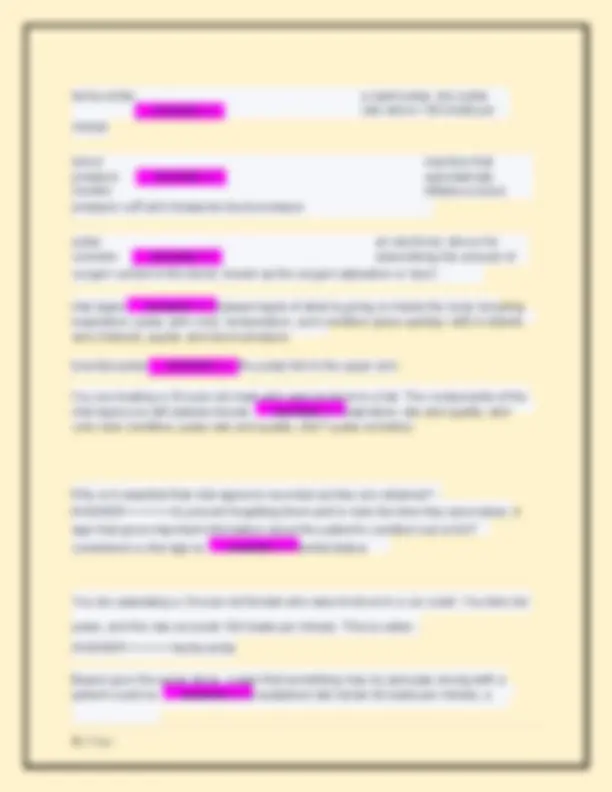
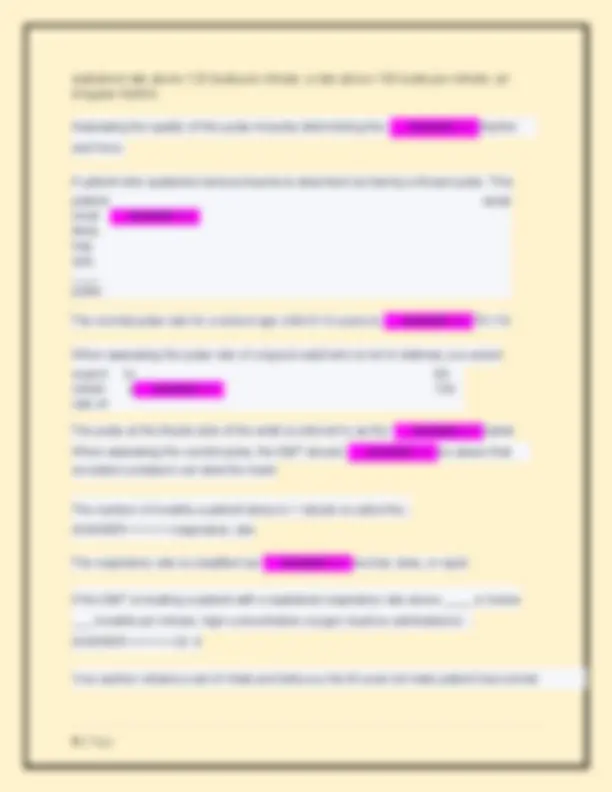
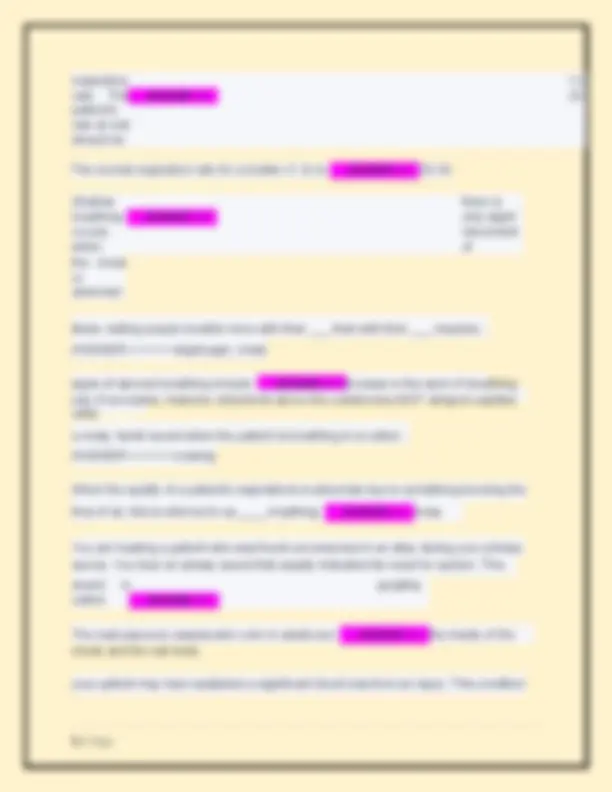
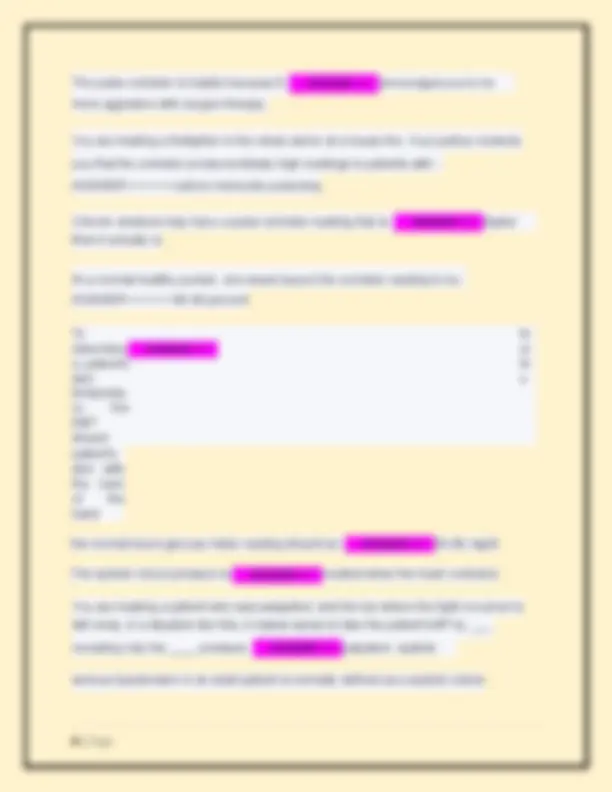
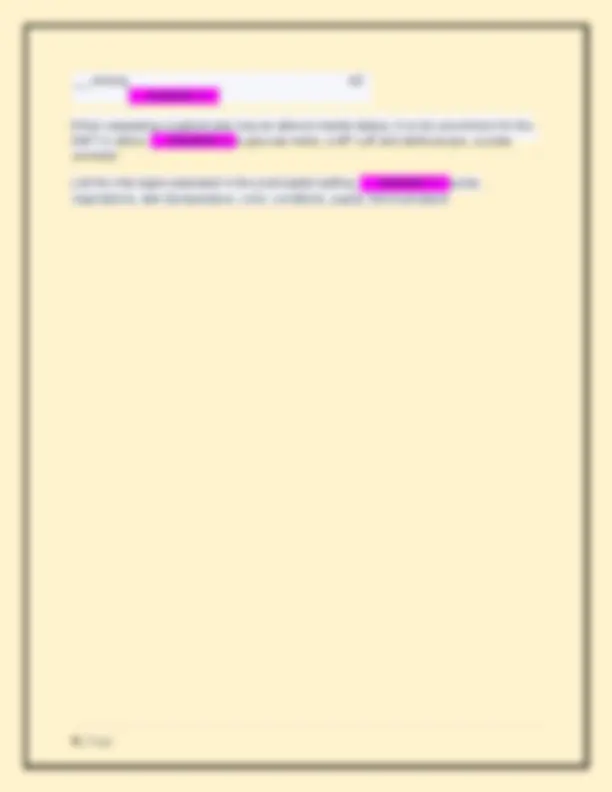


Study with the several resources on Docsity

Earn points by helping other students or get them with a premium plan


Prepare for your exams
Study with the several resources on Docsity

Earn points to download
Earn points by helping other students or get them with a premium plan
Community
Ask the community for help and clear up your study doubts
Discover the best universities in your country according to Docsity users
Free resources
Download our free guides on studying techniques, anxiety management strategies, and thesis advice from Docsity tutors
EMT FINAL EXAM STRUCTURED QUESTIONS & VERIFIED ANSWERS A+ GRADED
Typology: Exams
1 / 9

This page cannot be seen from the preview
Don't miss anything!






The pressure remaining in the arteries when the left ventricle of the heart is relaxed and refilling - ANSWER>>> diastolic blood pressure A slow pulse; any pulse rate below 60 beats per minute - ANSWER>>>>>>>Bradycardia Force of blood against the walls of the blood vessels
bloo d pressur e The pulse felt along the large artery on either side of the neck - ANSWER>>>>>>>carotid pulse touching or feeling; a pulse or blood pressure may be palpated with the fingertips - ANSWER>>>>>>>palpation the number of pulse beats per minute - ANSWER>>> pulse rate in the pupils of the eyes, reacting to light by changing size - ANSWER>>> reactivity the rhythmic beats felt as the heart pumps blood through the arteries - ANSWER>>>>>>>pulse
the rhythm and force of the pulse - ANSWER>>> pulse quality major artery of the arm - ANSWER>>> brachial artery when a stethoscope is used to listen for characteristic sounds - ANSWER>>>>>>>auscultation get larger (^) - ANSWER>>> dilate get smaller - ANSWER>>> constrict the pulse felt at the wrist - ANSWER>>> radial pulse respiratory quality - ANSWER>>> normal or abnormal character of breathing respiratory rate - ANSWER>>> the number of breaths taken in 1 minute respirator rhythm - ANSWER>>> the regular or irregular spacing of breaths oxygen saturation (^) - ANSWER>>> the ratio of the amount of oxygen present in the blood to the amount that could be carried, expressed in a percentage sign
- ANSWER>>> an indication of a patient's condition that is objective, or can be observed by another person; it can be seen heard, smelled, or felt by others sphygmomanometer - ANSWER>>> the cuff and gauge used to measure blood pressure symptom - ANSWER>>> an indication of a patient's condition that cannot be observed by another person, but rather is subjective or something felt and reported by the patient systolic pressure - ANSWER>>> the pressure created when the heart contracts and forces blood into the arteries the black center of the eye - ANSWER>>> pupil
sustained rate above 126 beats per minute; a rate above 150 beats per minute; an irregular rhythm. Assessing the quality of the pulse includes determining the: - ANSWER>>> rhythm and force. A patient who sustained serious trauma is described as having a thread pulse. This patient most likely has a(n)
pulse.
weak The normal pulse rate for a school-age child 6-10 years is: - ANSWER>>> 70 - 110 When assessing the pulse rate of a typical adult who is not in distress, you would expect to obtain a rate of:
When assessing the carotid pulse, the EMT should: - ANSWER>>> be aware that excessive pressure can slow the heart The number of breaths a patient takes in 1 minute is called the - ANSWER>>>>>>>respiratory rate The respiratory rate is classified as: - ANSWER>>> normal, slow, or rapid If the EMT is treating a patient with a sustained respiratory rate above ____ or below ___ breaths per minute, high-concentration oxygen must be administered. - ANSWER>>>>>>>24; 8 Your partner obtains a set of vitals and tells you his 45-year-old male patient has normal The pulse at the thumb side of the wrist is referred to as the: - ANSWER>>> radial
respiratory rate. The patient's rate at rest should be:
The normal respiration rate for a toddler (1-3) is: - ANSWER>>> 20 - 30 Shallow breathing occurs when:
there is only slight movement of the chest or abdomen Many resting people breathe more with their ___ than with their ___ muscles. - ANSWER>>>>>>>diaphragm; chest signs of labored breathing include: - ANSWER>>> increase in the work of breathing; use of accessory muscles; retractions above the collarbones (NOT delayed capillary refill) a noisy, harsh sound when the patient is breathing in is called: - ANSWER>>>>>>>crowing When the quality of a patient's respirations is abnormal due to something blocking the flow of air, this is referred to as ____ breathing. - ANSWER>>> noisy You are treating a patient who was found unconscious in an alley during your primary survey. You hear an airway sound that usually indicates the need for suction. This sound is called: - ANSWER>>> gurgling The best places to assess skin color in adults are: - ANSWER>>> the inside of the cheek and the nail beds your patient may have sustained a significant blood loss from an injury. This condition
g on the glucos e meter is reporte d in: glucos e per decilite r of blood It is a bright sunny day and you are treating a woman who fell off her bike. She is lying supine on the sidewalk. When you assess her pupils, you should: - ANSWER>>>>>>>cover the patient's eyes for a few moments, then uncover one eye at a time The pupils may be unequal due to any of the following conditions: - ANSWER>>>>>>>stroke, head injury, eye injury (NOT shock) Fright, blood loss, drugs, and treatment with eye drops may cause the patient's pupils to become - ANSWER>>> dilated When the left ventricle of the heart relaxes and refills, the pressure in the arteries is called the
pressure.
diastolic The pulse oximet er should be used routinel y with:
patient s complaining of respiratory problems
The pulse oximeter is helpful because it: - ANSWER>>> encourages you to be more aggresive with oxygen therapy. You are treating a firefighter in the rehab sector at a house fire. Your partner reminds you that the oximeter produces falsely high readings in patients with: - ANSWER>>>>>>>carbon monoxide poisoning Chronic smokers may have a pulse oximeter reading that is: - ANSWER>>> higher than it actually is IN a normal healthy person, one would expect the oximeter reading to be - ANSWER>>>>>>>95-99 percent To determine a patient's skin temperatu re, the EMT should
fe el th e patient's skin with the back of the hand the normal blood glucose meter reading should be: - ANSWER>>> 60 - 80 mg/dl The systolic blood pressure is (^) - ANSWER>>> created when the heart contracts You are treating a patient who was assaulted, and the bar where the fight occurred is still noisy, in a situation like this, it makes sense to take the patient's BP by ___, revealing only the ____ pressure. - ANSWER>>> palpation; systolic serious hypotension in an adult patient is normally defined as a systolic below